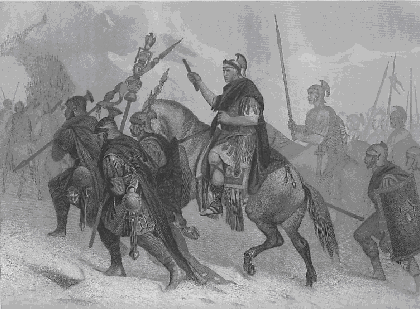
When Hannibal’s army crossed the alps in 218 BCE, only half of his men survived. Could a disease like cholera have been responsible for these extreme losses?
Archaeologists and paleopathologists (those who study ancient diseases) already have the tools necessary to answer this question. By analyzing DNA from human remains, it is possible to discover what disease(s) a person had during their life, and what they died from. This technique has been used to identify leprosy victims from the first century, as well as the identity of the disease that killed half of Athens in 439 BCE (typhus).
The most likely candidates for killing off Hannibal’s army have been identified as cholera, salmonella, tuberculosis, diphtheria, and typhus, as these were all present at that time period. Hopefully, the Stanford Alpine Archaeology Project will get their funding, so we can know for sure!
No comments:
Post a Comment